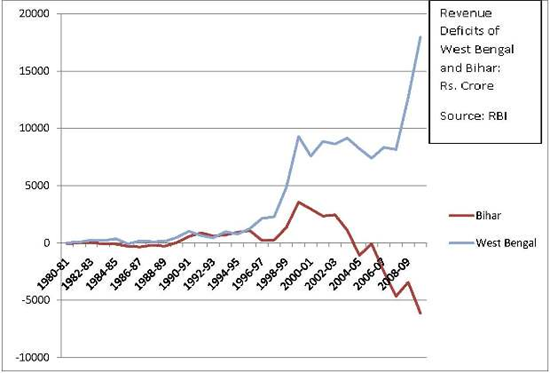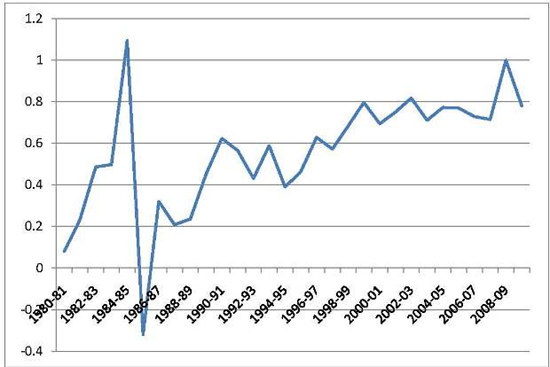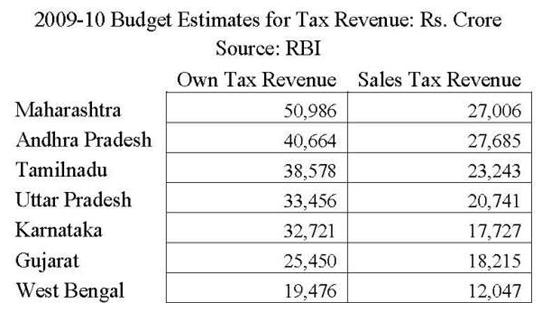Oct 26, 2025
Oct 26, 2025
For simplicity, a state’s finances may be likened to those of an individual. The latter earns a regular income each month and undertakes a set of common expenditures, broadly classified as consumption. These could involve payment for children’s schooling, food, electricity and other necessities. If income exceeds consumption, one ends up with positive savings. Over time, the accumulated savings, backed up by loans, are used for asset accumulation, such as a house or a car purchase. The lenders happily accommodate borrowers who have funds of their own and are borrowing with an eye towards asset creation, for the asset itself can be mortgaged to the lender as insurance against default.
On the other hand, a person who consumes more than what his regular income permits must also end up borrowing. However, these borrowings do not create marketable assets and often lead to bankruptcy for the borrower, since assets do not match liabilities. The lender too could end up in bankruptcy if he had loaned out of borrowed funds.
As in the case of individuals, the state too has a regular flow of earning and expenditure, recorded under what is called a Revenue Account. Revenue earnings for a state involve its tax proceeds, its share in Union Government taxes, a number of non-tax revenues arising from the provision of services and finally direct grants from the Centre. Revenue expenditures are divided up into several compartments, of which two large segments consist of committed salary payments (often called public consumption) for Government employees and interest on past loans. The excess of expenditure over earning is the Revenue Deficit. A positive deficit emerges when the state turns spendthrift. A negative deficit indicates a surplus left over for non-consumption use.

The graph shows how West Bengal has behaved in this context from 1980-81 through 2009-10. Over the entire period, a period that coincides pretty closely to the Left Front rule, the state has saved nothing from its incomes. Not only so, its deficits have displayed a rising trend. By comparison, a state such as Bihar has performed remarkably better. Not only has its Revenue Deficit been smaller throughout the chosen period, since 2004-05 the deficit has turned into a surplus.
One does not need to hold a degree in economics to appreciate the fact that for a state to be able to invest, say in infrastructure, it needs to create a fund to invest from. And the fund calls for saving. However, the saving need not represent financial prudence on the part of the state itself. As pointed out above, my investment can be financed by someone else’s saving too. In other words, I can borrow if there is a lender who is gullible enough to lend with full knowledge of my reckless past. Most lenders will not fall into such traps unless they are coerced into doing so. For example, the British Industrial Revolution was financed by savings from impoverished India. America too has been able to survive, and even thrive for that matter, despite the fact that it is the most indebted nation in the world. Closer to home, the state of West Bengal has merrily pulled along, riding on the crest of ever accumulating debts. And that certainly is a paradox, for at the same time that the Marxists have enthralled us all with anti-US slogans, their account books look no different from America’s!
With the arrival of the sub-prime crisis, America’s creditors suffered, thereby plunging the world into a financial crisis that is yet to be fully resolved. The West Bengal government, on the other hand, blamed the Centre for its step-motherly treatment towards the state. More recently of course, it has gone further by proclaiming that the Central government is at best America’s flunkey. Unfortunately though, rhetoric cannot substitute for real goods and services, at least not for 34 years at a stretch. The massive defeat of the Marxists at the hands of a person whom they had never quite perceived as an opponent worth their attention has proved this to be the case without a trace of a doubt.
Where do we go from here? As our next graph demonstrates, the state’s revenue deficitshave not only risen over time, but they have risen to levels exceeding 80 per cent of the Fiscal Deficit.

This means, since Fiscal Deficit during a year measures a state’s new loans for that year, most of our committed expenditures were being financed by loans. That is, less than 20 per cent of our loans were being utilized for asset creation.
What are a state’s assets? In the eyes of the Leftist government, agricultural land was the most important of our assets. One cannot deny this fact, since land produces a continuous stream of food to keep the population alive as well as incomes for the farmers. However, farmers are not the only inhabitants of the state, though they constituted the greatest support for the Left’s vote bank. On the other hand, farm incomes were not a dependable source of revenue for West Bengal, a fact that holds true for the entire country as well. Where else then would the state earn its revenue from? How does West Bengal look like in terms of revenue collection, compared especially to other states? According to the Reserve Bank of India, the 2009-10 Budget estimates reveal the following scenario.

Quite clearly, we lag far behind states worth our reckoning as far as revenue generation goes and there is little doubt that the situation, the accumulated incompetence if you will, cannot be removed overnight. One way the financial crisis can be resolved is by ensuring that corruption in sales tax collection is eliminated. More importantly, as the Own Tax Revenue figures show (and these include all taxes), a way must be discovered for revenue generation. Unfortunately, small and medium scale industries alone cannot be the solution to the problem. Large industries need to be set up and these alone can revive the ailing state of revenue collection.
This is easier said than done. First, large industries require time to set up. Secondly, after the Singur events, land acquisition could pose a serious problem. Some believe that free market purchases and sales of land is the only workable solution to the problem. This is unlikely to be the case. Quite apart from the fact that it is difficult for a handful of industrialists to negotiate with thousands of land owners, even farmers who are willing to sell will want to wait till markets push up prices substantially. This in turn could lead to the emergence of middlemen and associated corruption.
There are many who look forward to the development of tourism as a panacea for our economic woes. Obviously, if tourism flourishes, it will do so with a concomitant rise in state revenues. However, just as industries look forward to built up infrastructure before moving in, tourists too will not be attracted unless roads, hotels and other infrastructure develop.
The public though has monumental hopes. And, this itself might turn into a nightmare for the new government. If magical transformation is what we are expecting, then we will surely end up with disappointment. The last thing Bengal should do is force the government to fall back on excuses, i.e. accusing its unenviable financial inheritance, for not delivering fast enough. If the freshly elected government is pushed into doing this, it would behave no differently from the Leftists, who had always held the Centre responsible for their non-performance.
18-May-2011
More by : Dipankar Dasgupta